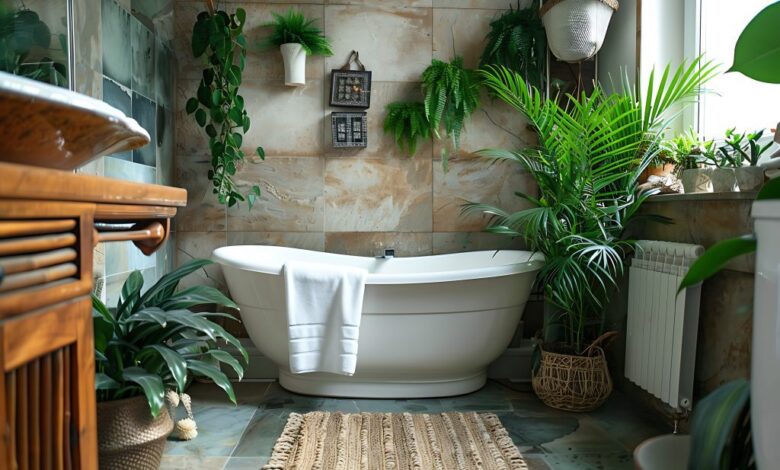Do Household Plants Improve Air Quality?

Household plants are often celebrated for their aesthetic appeal, but do household plants improve air quality? This article explores the potential benefits of household plants in enhancing indoor air quality, backed by relevant data and insights.
Introduction to Household Plants and Air Quality
Household plants have long been recognized for their ability to beautify indoor spaces and create a calming ambiance. Beyond their visual appeal, there is growing interest in their role in purifying indoor air and potentially improving overall air quality.
How Do Household Plants Improve Air Quality?
1. Oxygen Production
Plants are natural oxygen producers through the process of photosynthesis. During daylight hours, plants absorb carbon dioxide and release oxygen, which can help increase oxygen levels in indoor environments.
2. Air Filtration
Certain household plants have been studied for their ability to remove airborne pollutants such as:
Volatile Organic Compounds (VOCs): Common indoor pollutants emitted by household products, furniture, and building materials.
Formaldehyde: Found in adhesives, fabrics, and some cleaning products.
Benzene and Trichloroethylene: Found in plastics, paints, and synthetic fibers.
3. Humidity Regulation
Plants release water vapor through a process called transpiration, which can increase humidity levels in dry indoor environments. Balanced humidity levels contribute to respiratory comfort and reduce the survival rate of airborne viruses and bacteria.
Common Household Plants Known for Air Purification
1. Spider Plant (Chlorophytum comosum)
Effective in removing formaldehyde, xylene, and carbon monoxide from indoor air.
Low maintenance and suitable for hanging baskets or pots.
2. Peace Lily (Spathiphyllum spp.)
Removes ammonia, benzene, formaldehyde, and trichloroethylene.
Thrives in low light conditions and blooms seasonally with white flowers.
3. Snake Plant (Sansevieria trifasciata)
Known for its ability to absorb formaldehyde, nitrogen oxides, and benzene.
Requires minimal water and tolerates low light conditions.
4. Aloe Vera (Aloe vera)
Effectively removes formaldehyde and benzene from indoor air.
Doubles as a natural remedy for minor burns and skin irritations.
5. Boston Fern (Nephrolepis exaltata)
Acts as a natural air humidifier, releasing moisture into the air.
Effective in removing formaldehyde and airborne pollutants.
Scientific Studies on the Benefits of Household Plants
Several scientific studies have explored the impact of household plants on indoor air quality:
A NASA study identified specific plants, such as the spider plant and peace lily, for their air-purifying capabilities, particularly in enclosed environments like space stations.
Research published in the Journal of Toxicology and Environmental Health found that indoor plants can significantly reduce airborne VOCs, contributing to improved indoor air quality.
Practical Tips for Using Household Plants to Improve Air Quality
1. Plant Placement
Strategically place plants in living areas, bedrooms, and home offices where you spend the most time to maximize air purification benefits.
2. Variety and Quantity
Mix different types of plants to target a broader range of indoor pollutants. Consider placing 1 to 2 medium-sized plants (6-8-inch pots) per 100 square feet of indoor space for optimal air purification.
3. Maintenance
Regularly dust plant leaves and inspect for pests to maintain plant health and air purification effectiveness. Follow watering and fertilizing guidelines specific to each plant species to ensure longevity.
Conclusion
Household plants offer more than just aesthetic value; they can play a significant role in improving indoor air quality by filtering out pollutants and increasing oxygen levels. Incorporating air-purifying plants into indoor environments can contribute to a healthier and more pleasant living space, benefiting occupants of all ages.
While household plants are not a substitute for proper ventilation and air filtration systems, they complement indoor air quality improvement efforts. By selecting and caring for the right plants, individuals can enjoy cleaner, fresher indoor air and reap the health benefits associated with enhanced air quality.
In conclusion, the presence of household plants can indeed contribute positively to indoor air quality, making them a valuable addition to any home or indoor environment seeking natural air purification solutions.




